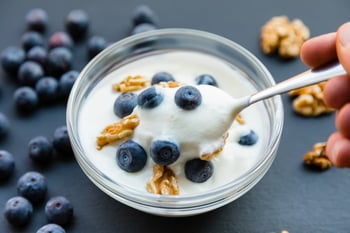 It seems implausible, but the USDA estimates that about one-third of the nation’s food at the retail and consumer levels never gets eaten. Food accounts for the single largest category of waste material in municipal landfills and translates into approximately 133 billion pounds at a value of about $161 billion.
It seems implausible, but the USDA estimates that about one-third of the nation’s food at the retail and consumer levels never gets eaten. Food accounts for the single largest category of waste material in municipal landfills and translates into approximately 133 billion pounds at a value of about $161 billion.
These surprising food waste statistics stand in stark contrast to the reported sentiment of global consumers, with 49% saying they consider sustainability attributes when purchasing food and beverages, according to a recent report. Despite lagging behind their European counterparts, around 40% of North American consumers say they are deeply committed to sustainable nutrition and are aware of their own impact.
Among those surveyed, around 30% are willing to make sustainable food and beverage choices, but they look to companies and public institutions to take the lead. Some consumers turn to plant-based proteins as a way to lessen their impact on the environment, but research shows that trust may have been misplaced.
Whey Protein Ranks Remarkably Low for Environmental Impact
A major part of examining operations that contribute to food waste starts with scrutinizing the ingredient supply chain. Areas receiving a lot of attention from the media, social influencers, manufacturers and consumers are sustainable protein sources.
It’s been a widely held belief that plant-based proteins are more earth-friendly than whey proteins, but a study by Arizona State University indicates otherwise. While true that plant proteins have a lesser impact on the environment compared with meat products such as beef, pork and poultry, whey protein has less of a negative impact on global warming potential than all commonly used plant proteins, including pea protein, soy protein, tofu and more than two dozen other protein sources.
Typically, ranking near the bottom doesn’t sound like a formula for success. When it comes to how much environmental impact an ingredient has, however, ranking near the bottom is highly desirable.
Whey Protein — The Ultimate Upcycled, Sustainable Food
Knowing how whey protein is made may help eco-conscious consumers understand its benefits as a sustainable ingredient in addition to its inherent nutritional qualities, leading them to consider it over plant-based proteins.
RELATED INFOGRAPHIC: See How Whey Protein Concentrate is Made
During the traditional cheesemaking process, the solids (cheese curds) are separated from the liquid (whey). As little as 50 years ago, the remaining whey was considered a waste product of cheese, and many farmers ended up spraying it on their fields. However, some innovative cheese producers saw the potential for this nutrient-rich ingredient for use in numerous applications.
My, how times have changed.
Now, whey protein is upheld as a superfood and the global whey protein market is expected to reach $15.6 billion by 2026 with growth at 12.6% CAGR. It is widely used in food products throughout the world, providing antioxidant, immunity-boosting and anti-aging properties. Containing all essential amino acids, whey protein has also been shown to help reduce risks of stroke, heart and liver disease, and aid weight loss.
Whey protein is a forerunner in sustainable food production and offers food manufacturers cost-effective ways to improve nutrition using an all-natural ingredient. Educating consumers about its benefits and promoting its sustainability offers an opportunity for food manufacturers to appeal to those who are interested in environmentally friendly and nutritious foods.
Whey Protein as a Shelf-Stable Food Ingredient
While commonly associated with nutritional supplements in the form of whey protein isolate (WPI), whey protein has many uses in common food applications.
Grande Custom Ingredients Group produces the highest quality whey protein concentrates available, made with zero chemical modifications from the finest white Italian cheese. Another factor contributing to its sustainability is whey protein’s ability to extend the shelf life of products. When replacing milk, cream, eggs, cheese and other fresh ingredients, it helps reduce waste and spoilage.
Examples of whey protein concentrates include:
- Grande Bravo® is used in soups, sauces, dressings, baked goods, fillings, desserts and other savory applications.
- Grande Gusto® replaces fresh or processed cheese in queso dips, nacho cheese, cheese soups and sauces, resulting in improved nutrition and lower sodium levels.
- Grande Ultra® WPI contains the highest levels of protein and is used in clear protein beverages, smoothies, protein bars and more.
- Grande WPCrisp® adds crunch to protein bars, cereals and snacks
Food manufacturers play a crucial role in supporting their customer base’s sustainability and nutrition goals. The benefit of sustainable ingredients for food manufacturers is twofold: not only is it better for the environment; it’s also better for a company’s bottom line.
Combined with its superior nutrition profile, clean flavor, functional properties and attractive price point, it’s easy to see why whey protein is a go-to ingredient for food manufacturers and consumers alike. These are just some of the benefits of whey protein. See how whey protein can also optimize your supply chain and profitability by accessing our guide below. Then, contact the food scientists at Grande Custom Ingredients Group to request samples and talk through your application challenges.




